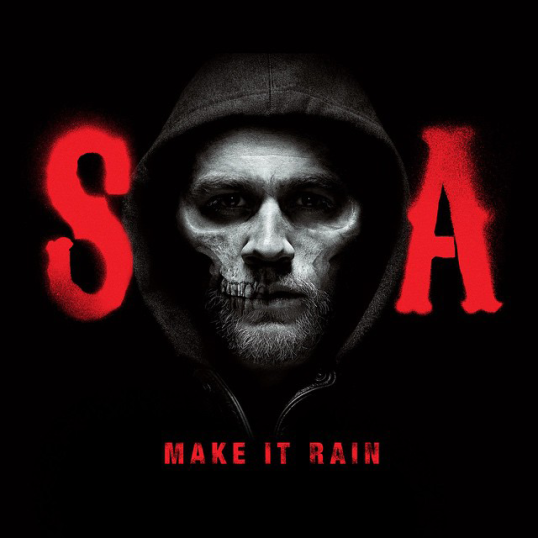
Two years removed, Kentucky has left a unique long-term impression in my mind. For all of the excitement over an authentic and well-crafted mingling of traditional Appalachian folk and black metal–the term “blackgrass” got tossed around a lot–I honestly don’t remember how most of the songs went. This is because Kentucky‘s message managed to trump its sound. I remember the old man talking about organizing strikes against the coal company. I remember Sarah Ogan Gunning’s boldly defiant calls to overthrow capitalism. I think of settlers slaughtering Indians, mountains blown into dust, rivers running black with pollution, grim-faced miners broken in body but never in spirit, a modern generation abandoning everything their ancestors worked so hard to accomplish… That is my memory of Kentucky.
Chase the Grain
I can’t detach myself from Kentucky enough to appreciate Roads to the North as an independent entity. That’s probably fine. I had never heard of Panopticon before Austin Lunn nailed his bloody heart to his sleeve in 2012, and that identity will persist through my perception so long as it remains true. Roads to the North has no explicit message, no lyrics sheet, no spoken tracks or American folk covers. But it has Kentucky, and because of that every song takes on a deeper, more robust meaning than it might have otherwise.
It would be interesting to know what a folk/black metal fan unfamiliar with Panopticon takes from this album. Does the music alone stand far above and beyond the norm? I like to think it does. The album incorporates some entirely unexpected but highly effective melodic death metal moments, especially in the opening track “The Echoes of a Disharmonic Evensong”. This track also gives us perhaps Lunn’s best incorporation of fiddle directly into black metal to date. “The Long Road Part 2: Capricious Miles” transitions out with a long and enthralling jazzy progressive rock chill reminiscent of mid-era Opeth. The whistle in “Where Mountains Pierce the Sky” sounds nothing like what we’re used to out of the European scenes, harkening instead to a western indigenous sound I have only heard from some obscure Mexican folk metal bands. “The Long Road Part 1: One Last Fire” is an unconventional six minute acoustic bluegrass piece that feels more like something straight out of Lunn’s imagination than Appalachia.
The intensity hops around so suddenly that Roads to the North may feel disjointed at first, but the stark contrasts are never forced. Because you don’t always see them coming, they are striking rather than cliche. Lunn performs each of the album’s myriad instruments better than a lot of people who specialize in only one, and there aren’t many producers on the black metal market that can compare to Colin Marston. He has a knack for subtlety that is hard to come by in the scene. I absolutely love the way the tremolo emerges around 30 seconds into “Chase the Grain”, for instance. It’s so soft that you feel its effect on the song as a whole long before your brain consciously recognizes it.
Norwegian Nights
But I suppose I don’t really care about the finer musical details of Roads to the North, and that is why I found this album so difficult to review. This music is only a gateway. Like an engaging book, you never notice that it is well written. Roads to the North is not the guided tour we found on Kentucky. It leaves us be to explore where the feelings take us within the context of the world Lunn has already shown us. Those paths can be rocky. It’s not the glorified past of so many European pagan metallers. The should-be eternal is tainted. The land is marred. It’s the introspective melancholy Americana of Bob Dylan and Tom Waits, and your heart goes out to so many things that you can never hope to save.
“Lie beneath a cold blanket and watch the mountains sleep. The train rolls by every hour, as I wake and dream. The woods and the hills–faces so dear to me. Frozen lakes, flatland snow, where I’m called I’ll go. Such still quiet, then the whistle echoes. My fragile sleep torn from me, as many other things will be.”






